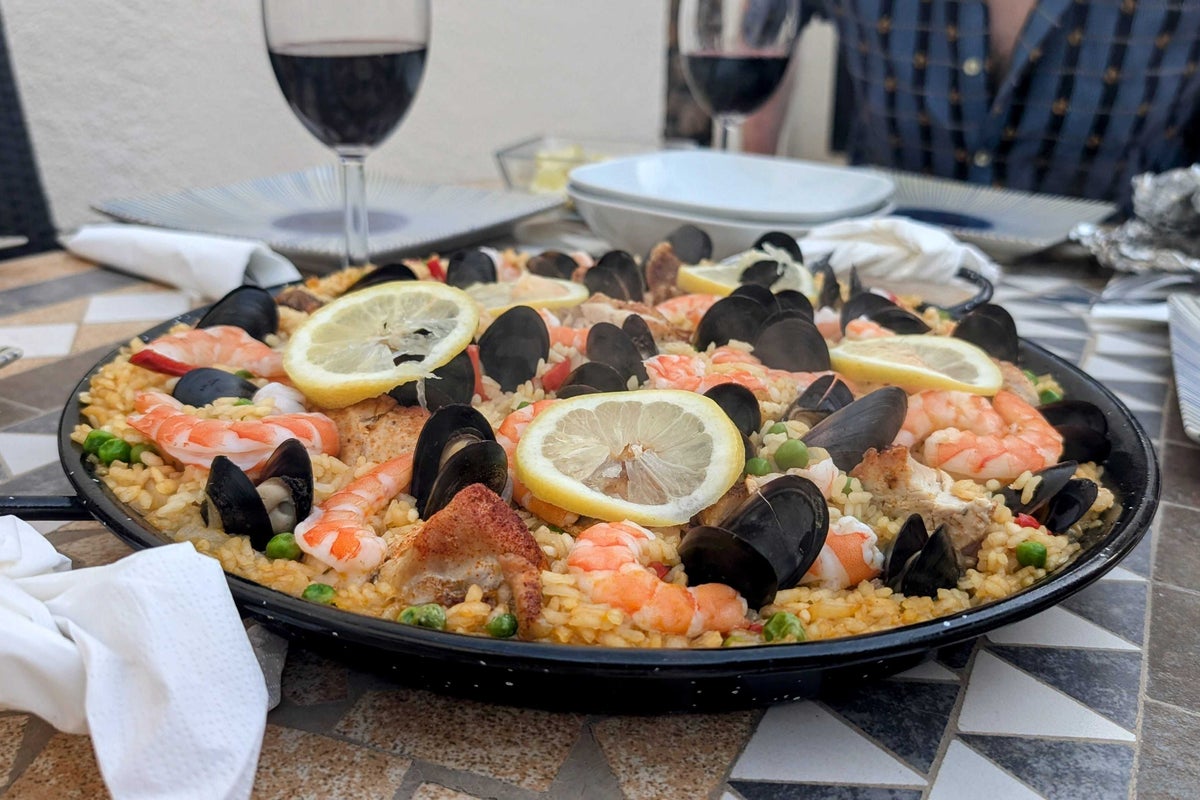
Last week I did what any sensible person does when life feels too loud and my inbox starts to feel like an unpaid second job: I ran away to Spain. My mum lives in a hilltop village in Andalucía called Bédar – all whitewashed houses, pink bougainvillea clinging to the walls, roads you’d be mad to attempt in a hire car and hills steep enough to justify a second breakfast.
She retired there eight years ago with her husband, though calling it a “retirement” feels wildly inaccurate. Her life looks less like winding down and more like a reawakening – the sort of sun-drenched, no-nonsense freedom I’m wildly jealous of. She’s busier than I am, which says plenty considering I’ve been out every night on the trot this week. Catching up requires booking a slot that doesn’t clash with her golf, her exercise classes, her choir or a punishingly hot uphill walk (she once made me join her – I’ve never let her forget it).
I don’t visit nearly often enough – which she never lets me forget either – but when I do, I never want to leave and guarantee myself a week of moping afterwards, wondering for the thousandth time why I didn’t apply for residency before Brexit ruined my life and tethered me to London.
I didn’t always like Spain. Too hot, too noisy, not enough French wine (actually there still isn’t enough French wine). But since she moved there, I’ve come around. Hard not to, really – the regional food alone could convert a cynic. One lockdown I hid there for weeks, scheduling meetings early and late so I could spend every afternoon horizontal by the pool, reapplying SPF with all the urgency of a tax return.
Now, whenever I visit, I ask for exactly one thing: her paella. It is, in no uncertain terms, not traditional. No rabbit, no snails, no approval from any self-respecting Valencian grandmother. But I wouldn’t change a grain. Over the years, she’s done her research – the best stock, the proper paella rice, the right sachet of seasoning pinched from Spanish friends. She’s also mastered the elusive crispy bottom, the socarrat, which I knowingly give myself indigestion for, racing through my plate just to get to it.
Mum’s a good cook – though you’d never know it if you judged her on the infamous corned beef and sweet chilli jam sandwich she once made me for a train journey. For a while she was single-handedly keeping Blue Dragon in business. Happily, she’s grown out of that.
When I landed last week, all out of words and dangerously close to burnout, she asked what I wanted to do. I said: nothing. Lie in. Roast myself by the pool. Maybe drink something cold at noon. And eat her paella – obviously.
So that’s this week’s Sunday Club: my mother’s very un-Valencian, deeply comforting, mostly authentic paella. A bit of chicken, a bit of seafood, a good hit of paprika and saffron, and if you do it right – that deeply satisfying caramelised crust at the bottom that will have you scraping the pan like it owes you money.
If you’re new here, Sunday Club is our weekly permission slip to cook one good meal and make Sunday feel like Sunday. So far, we’ve done crispy duck with pickled cherries, a spring lasagne, a summery roast trout and pizza night for tiny flats and gadget-mad dads. This week, we’re in Spain, ignoring the rules and fighting for the last spoonful.
Mum’s paella

Serves: 4
Ingredients:
2-3 tbsp
1 medium onion, sliced
1 medium red pepper, sliced
2 tsp sweet paprika
Few strands saffron
400g risotto (arroz redondo ideally, or arborio if you can’t find it)
Approx 1 litre stock*
4 chicken thighs (bone in)
2-3 tbsp hot paprika
20 fresh or frozen uncooked prawns, shelled and cleaned
24-30 mussels, precooked or fresh
Good handful frozen peas
Salt and pepper
1 medium lemon, sliced
1 lemon, cut into wedges (to serve)
Equipment:
Paella pan, 38cm diameter, with lid (or you can use aluminium foil)
Method:
1. Put the chicken thighs in an oven-proof roasting dish. Sprinkle with hot paprika, salt and pepper and drizzle with 1 tablespoon of olive oil. Open roast for approximately 30 minutes at 180C until browned and juices run clear. Keep warm until needed. KEEP ANY JUICES!
2. Whilst the chicken is cooking, fry the onions and red pepper over a medium heat in 2 tablespoons of olive oil until soft. Sprinkle over the sweet paprika and saffron and stir well.
3. Add the rice and stir until well coated with the oil and paprika
4. Add about half of the stock and bring to the boil, then add the frozen peas. Turn down to a low simmer and cover with a lid or well-fitting aluminium foil. Check periodically, stirring occasionally, adding more stock (or the chicken juices from before) as required until the rice is al dente.
5. Arrange the chicken pieces, prawns and mussels in the rice, pushing them into it. Lay the lemon slices among the protein pieces. Add more stock if needed and cover again.
6. Keep on a medium heat without stirring until virtually all the liquid has gone. Leave a little longer to ensure a “crispy bottom” to your paella… the delicious bit everyone fights over! (This takes some practice to get crispy rather than burnt!)
7. Serve in the paella pan with crusty bread, fresh lemon wedges and a bowl for mussel shells and bones. A good crisp white wine should be compulsory with this or a jug of sangria!
Notes:
*Good stock is essential and there are a number of options depending on what is available.
1. Chicken stock, homemade preferably but good quality shop-bought is fine.
2. In Spain, we have “caldo”, which is a sauce in a carton. In the UK, a lobster bisque or soup in tins and cartons is available in most supermarkets and would make a good alternative.
3. Paella seasoning is readily available in Spain and can be found in British supermarkets next to the spices (Schwartz have one, for example), to which stock can be added.
I also usually add chopped chorizo at stage 2. My Spanish friend would be rolling her eyes at this point as this is considered sacrilege in Spain! However, I like the flavour it adds.
Rabbit is usually used in place of chicken in Spain, but is not always available.







